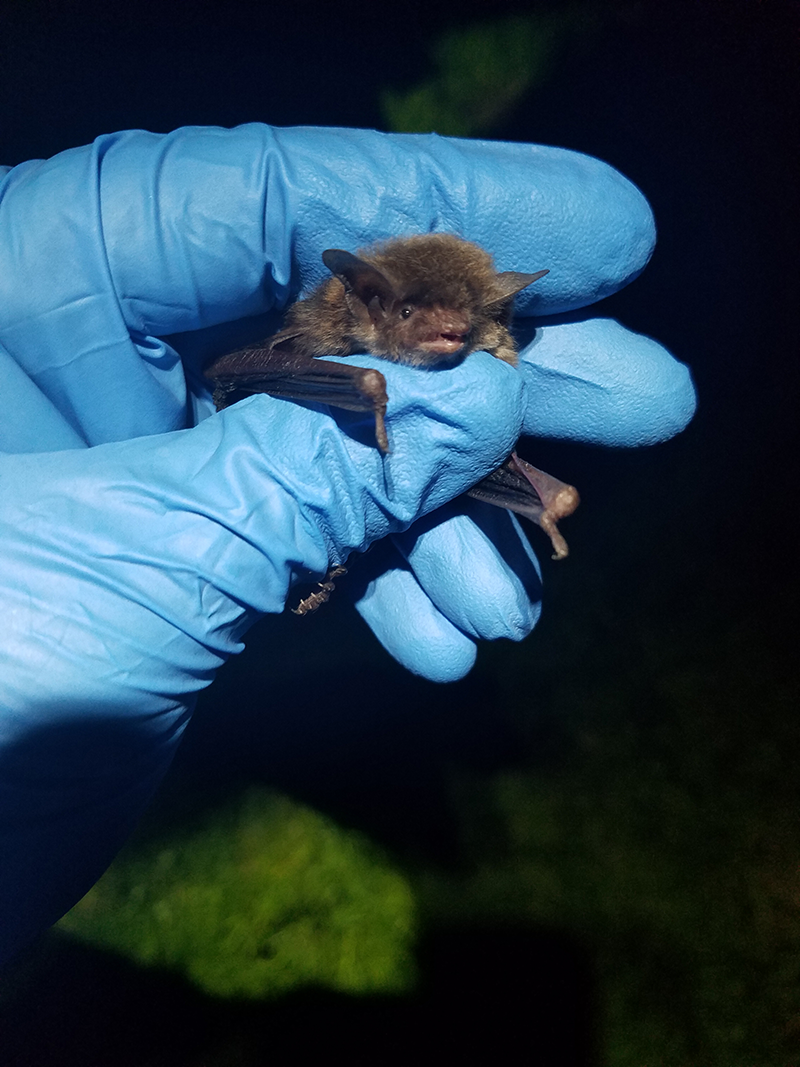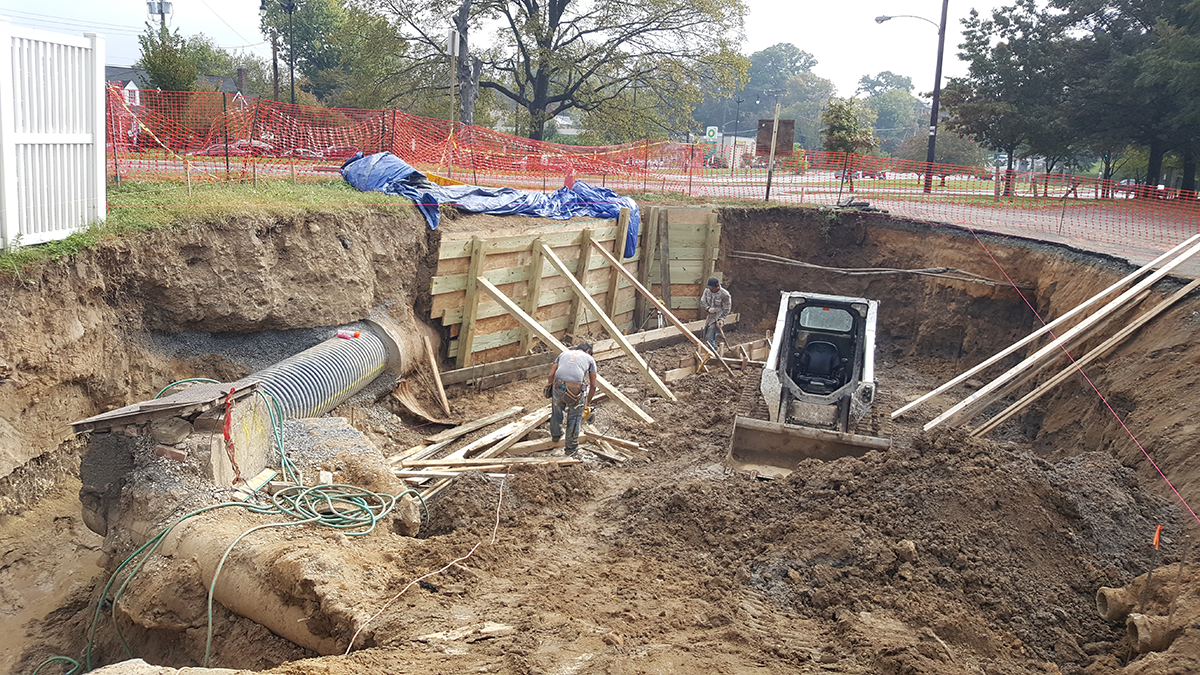When you start a company, John Yarchoan ’13 tells me from behind the wheel of a rental car, with the Philadelphia skyline in the rearview mirror, you go in with the idea that it’s going to be huge, that it will do groundbreaking work, that it might even change the world. And then you find yourself dealing with “a nice old lady who wants to make sure she can still see her husband’s gravesite.”

Yarchoan at a rain garden his company built in Northeast Washington, D.C., to capture stormwater and prevent flooding.
The nice old lady in question is Judy Angstadt, and after an hour or so in the car, we arrive at her house in the tiny township of Oley, Pa., 50 miles northwest of Philly. The off-white, two-story house stands near a stone-sided barn and a grain silo. Cornfields abut one side of the house; across the road, the land slopes gently down toward 27 acres of newly protected wildlife habitat, including a stream deemed one of “exceptional value” by the Pennsylvania Department of Environmental Protection. The memorial to Angstadt’s late husband, Roy, sits a few dozen feet from this stream and about 300 yards from her front door, in a field of overgrown grasses, wildflowers and milkweed. Beyond the field, the land is a rich green-yellow in the July sun. At one edge of the clearing stands an impressive—albeit dead—tree, towering over the stand of oaks behind it. Emergent wetlands blur the boundary between land and water as paper-thin pools appear at the base of the sedges, making for soggy conditions underfoot but providing excellent habitat for threatened bog turtles and the multitudinous other species that make up a thriving ecosystem.
Included in this ecosystem is the state’s largest maternity colony of the endangered Indiana bat; it’s these bats, along with the turtles and the stream, that have brought Yarchoan here to Oley. Since founding an environmental mitigation company, Magnolia, in 2016, he has worked with dozens of businesses to offset the environmental damage they do in the course of new development and their normal operations. His work mostly involves restoring and protecting habitats similar to those that were damaged, usually on private property.
On this project in Oley, Yarchoan has been working with Angstadt, as well as with a large cast: the current owner of the 27 acres and the surrounding farmland, a Mennonite farmer; the former property owner, who’d sold the land’s conservation easement to Magnolia; the Pennsylvania Department of Environmental Protection; the Pennsylvania Game Commission; and a local conservation group. Magnolia’s goal is threefold: to protect the property from ever being developed or farmed, to improve the quality of habitat for the bats and turtles, and to stabilize the banks of the stream.
Various state and federal regulations require that, when a company causes unavoidable environmental damage, the company must make up for it by financing the creation of equivalent habitat somewhere nearby, improving existing habitat or protecting habitat that might otherwise be damaged or destroyed. This has led to a thriving market for so-called—and sometimes controversial—offset credits. A company like Magnolia can oversee the restoration, improvement or protection of habitat, and then sell the “credits” generated from that work (and verified by a governing agency) to a company that needs to satisfy its legal environmental obligations. At this site, Yarchoan and Magnolia are selling these offset credits to two energy companies: one whose work has disturbed bat and turtle habitat and another that impacted a stream elsewhere in the watershed.
Magnolia’s work spans multiple states and biomes, from this Pennsylvania stream, to pine snakes in New Jersey’s Pinelands, to greater sage grouse habitat in Nevada. The process starts, says Yarchoan, with an analysis of where there might be demand for offset credits—that is to say, what companies are pursuing which sorts of projects, and what environmental damage those projects are likely to cause. Companies will also approach him and let him know they’re planning a project and expect to need certain types of offsets; Magnolia’s most frequent clients are renewable energy developers.
Each project presents different challenges. “If we’re talking about an endangered species offset, it means we have to rely on really good data on where these endangered species are, what type of habitat they use and what types of projects will meaningfully improve their outcome,” Yarchoan says. This can include, as at the Pennsylvania site, protecting and improving habitat for bats; or it may mean that Magnolia pays a farmer to allow a wetland to be restored on a property. In most cases, these rural stakeholders make the projects possible.
Yarchoan has an affable demeanor and a ready, slightly sheepish smile. For him, working with those stakeholders is part of the appeal of his work: “You get to see the ground floor of environmentalism in so many different communities, and see how different people think about the environment and how that interfaces with politics and the law.” The initial interactions aren’t always easy; when he approaches landowners with an offer, he says, “They might say, ‘Yes’; they might say, ‘Screw you.’” Or, he says, they might be interested, but they want to negotiate.


